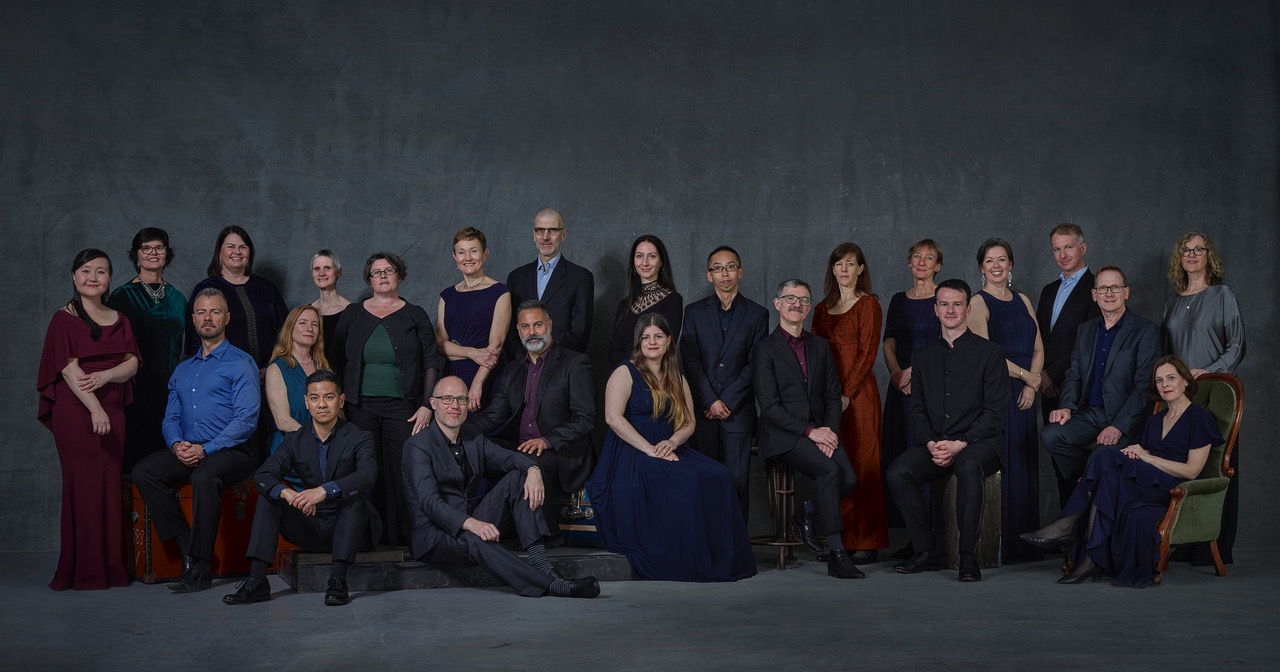As is often the case with the Sydney Chamber Choir, this concert presented music of vastly different periods in such a way as to emphasise c’ontinuity over change.
In this case, it was the music of the early Baroque in Germany – including Franz Tunder and, of course, Heinrich Schutz – and the more contemporary – John Rutter and our very own Brooke Shelly.
Tunder is perhaps more known as an exemplar of the North German organ school than as a composer of choral works. This is a pity. What strikes one on first hearing the sinfonia-like opening to his Ein feste Burg ist unser Gott is that it is a near-replica of Muffat’s violin sonata (Tunder’s was probably first). And how fitting, given it was performed masterfully by the Muffat Collective. Here the opening was obviously used to new ends. The first few verses of that triumphant hymn – Ein feste Burg ist unser Gott – was sung by Wei Jiang with the delicate and restrained child-soprano-like timbre for which it was probably intended. A shifting metre, much like a dance, ushers in the entire choir which had a strong sense of independence of voice in each section. This makes for good effect with the sheer chaos that comes with ‘es streitet’. This was a suitable choice to perform with the Muffat Collective, as the piece is replete with those quaint instrumental interludes typical of early Baroque choral hymn settings.
Schutz’s Musikalische Exequien begins with a haunting intonation delivered resonantly by tenor Richard Sanchez, followed by an equally haunting Soli between tenors and bass. This is a difficult and long piece. For this reason, I felt there was lacking a certain variety in tone among the various soli and capellas. The piece ought to be marked by a certain Germanic oomph, given Schutz was the German choral champion of the Italian seconda prattica. This not something the choir is incapable of; it was delivered amply in the more modern works. But emotional ‘affect’ is not the monopoly of the moderns. Yet the performance was largely technically faultless, and the choir was at its best when it came together in unison to hammer home the repeated notes, like a spoken enunciation or declamation. The contrapuntal duet in the ‘Das Blut Jesu Christi’ was a moment to behold, and the way the voices seamlessly tied together is a testament as much to the quality of the voices on show as it is of Sam Allchurch’s direction and sense of musicality. Kiseok Kim’s brief piece on the continuo organ was also a nice transition between the Parts and was performed with little fault despite the technically-challenging nature of the piece.
Schmelzer’s La bella pastora was a tour de force of that quintessentially early-Baroque art of variation on folk tunes (think Sweelinck and his disciples). Anton Baba on cello performed the tune as a ground throughout, and vibrato was used tastefully as expressive ornamentation by all. Matthew Greco’s dexterity was on full display with some of the faster variations; not to mention the delightful exchanges between Greco and Refael Font-Viera.
The only thing better than a concert with a composition by Brooke Shelley is a concert with two compositions by Brooke Shelley. The first was commissioned by a parishioner at St James’ Church, King Street, who rightly wanted it to be a joyful and celebratory piece celebrating attaining the age of 80 (though cf Bach’s more sombre ‘Ich bin nun achtzig Jahr’). This it was. You can tell it was composed by someone classically-trained; it has hints of Baroque polyphony throughout (especially the opening, which was redolent of a Byrd composition), with the harmonies becoming progressively more inventive. Shelley’s Heavenly Father has a deep connection with Schutz’s Musikalische Exequien; it is based on permutations of some of its key musical phrases. Yet again we see the interposition of the old Baroque art of discreetly weaving a hymn into a tapestry of voices – this time being Schmuke dich o liebe Seele. The theme of ‘light and shade’ was captured nicely in the jarring harmonies that accompanied ‘joy’, which gave a delicious chiaroscuro effect.
Bach’s Lobet den Herrn is a very busy piece and demands a strong sense of independence among the voices. Despite some faults in coordination toward the beginning, it picked up resolutely toward the middle. The Choir was good at channelling the dance-like energy of the jubilant Alleluja, especially in the soprano parts where the successive allelujas leap upwards. It was a terrific way to end the Choir’s stellar 2022 season.
